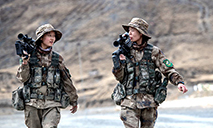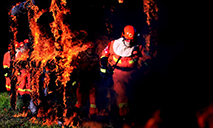Itinerant teams send medical services to high altitudes, remote areas in Tibet
LHASA, Dec. 26 (Xinhua) -- Southwest China's Tibet Autonomous Region has improved itinerant medical services at the grassroots level for people living at high altitudes or in remote areas, said local authorities.
The region has so far set up 638 such mobile diagnosis and treatment teams, achieving full coverage of its townships and subdistricts, the regional health commission said on its website.
In the first three quarters, more than 4,200 diagnosis and treatment sessions were carried out by these teams, benefiting over 1.29 million people, representing more than one-third of the region's population.
Building on the experience of itinerant teams over the past few years, the region has targeted more people in need of the services and raised the capabilities to treat frequently appearing or major diseases at the primary level, the commission said.
With a relatively sparse population on a vast land, Tibet has also taken other measures to improve grassroots medical services and make these services more available.
The region has strengthened the management and training of rural doctors, aiming to build a high-caliber team of doctors serving the grassroots and to provide safe, effective, convenient, and affordable basic medical services to farmers and herders, the authority said.
Tibet now has a full medical service system covering regular medical services, maternity and child care, disease prevention and control, and Tibetan medicine and therapies. It has 1,642 medical institutions of various types, said a white paper released earlier this year.
The region's average life expectancy has increased from 35.5 years in 1951 to 72.19 years at present.
Photos
Related Stories
Copyright © 2021 People's Daily Online. All Rights Reserved.










